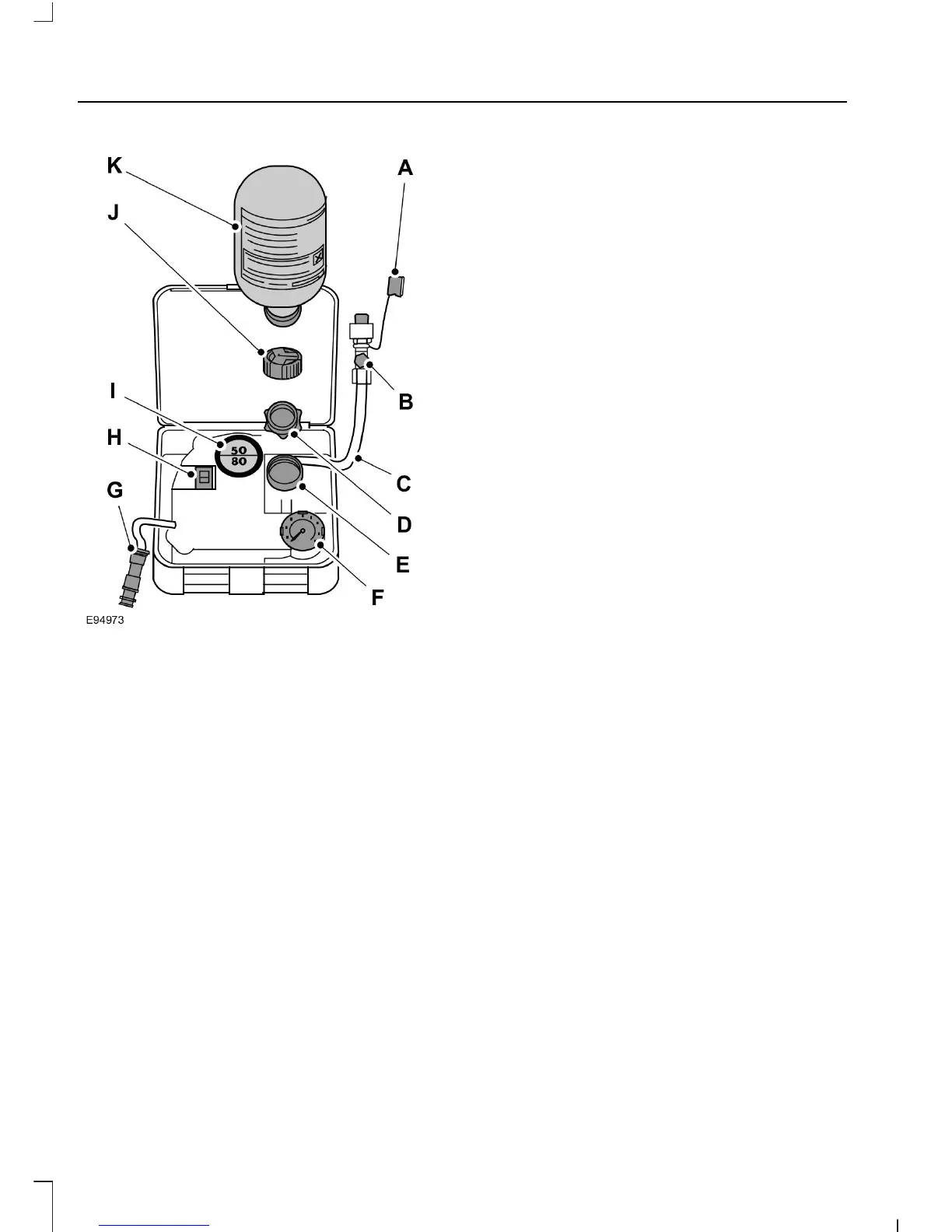Protective capA
Pressure relief valveB
HoseC
Orange capD
Bottle holderE
Pressure gaugeF
Power plug with cableG
Compressor switchH
LabelI
Bottle lidJ
Sealant bottleK
1. Open the lid of the kit.
2. Peel off the label I showing the
maximum permissible speed of
50 mph (80 km/h) from the casing and
attach it to the instrument panel in the
driver’s field of view. Make sure the
label does not obscure anything
important.
3. Take the hose C and the power plug
with cable G out of the kit.
4. Unscrew the orange cap D and the
bottle lid J.
5. Screw the sealant bottle K clockwise
into the bottle holder E fully tight.
6. Remove the valve cap from the
damaged tire.
7. Detach the protective cap A from the
hose C and screw the hose C firmly
onto the valve of the damaged tire.
8. Make sure that the compressor switch
H is in position 0.
9. Insert the power plug G into the cigar
lighter socket or auxiliary power point.
See Auxiliary Power Points (page
105).
10. Start the engine.
11. Move the compressor switch H to
position 1.
12. Inflate the tire for no longer than 10
minutes to an inflation pressure of
minimum 1.8 bar (26 psi) and a
maximum of 3.5 bar (51 psi). Move
the compressor switch H to position
0 and check the current tire pressure
with pressure gauge F.
Note: When pumping in the sealant through
the tire valve, the pressure may rise up to
6 bar (87 psi) but will drop again after about
30 seconds.
Note: After you have switched the
compressor off, you may hear air escaping
from the damaged tire. This is normal and
can be ignored provided that the specified
minimum tire pressure has been reached.
204
Kuga (CBS) Vehicles Built From: 10-03-2014, Vehicles Built Up To: 31-12-2014, CG3585en enGBR, Edition date: 02/2014, None
Wheels and Tires

